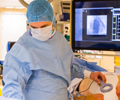Tag Archives: pacing

August 2016 Br J Cardiol 2016;23:114–8 doi:10.5837/bjc.2016.029
Evaluation of a new same-day discharge protocol for simple and complex pacing procedures
Thomas A Nelson, Aaron Bhakta, Justin Lee, Paul J Sheridan, Robert J Bowes, Jonathan Sahu, Nicholas F Kelland
| Full textOctober 2015 Br J Cardiol 2015;22:138–142
News from the European Society of Cardiology Congress 2015
BJCardio Staff
| Full text
March 2014 Br J Cardiol 2014;21:38 doi:10.5837/bjc.2014.006
Pacing in patients with congenital heart disease: part 3
Khaled Albouaini, Archana Rao, David Ramsdale
| Full text
November 2013 Br J Cardiol 2013;20:151–3 doi:10.5837/bjc/2013.31
Pacing in patients with congenital heart disease: part 2
Khaled Albouaini, Archana Rao, David Ramsdale
| Full text
September 2013 Br J Cardiol 2013;20:117–20 doi:10.5837/bjc/2013.028
Pacing in patients with congenital heart disease: part 1
Khaled Albouaini, Archana Rao, David Ramsdale
| Full text



